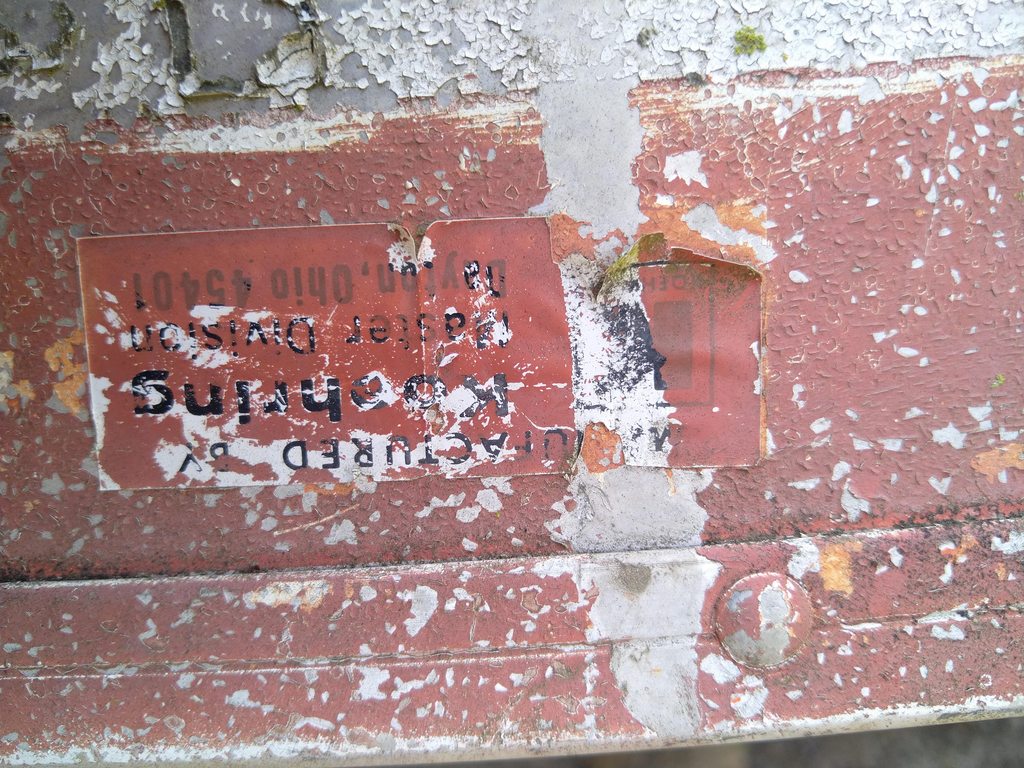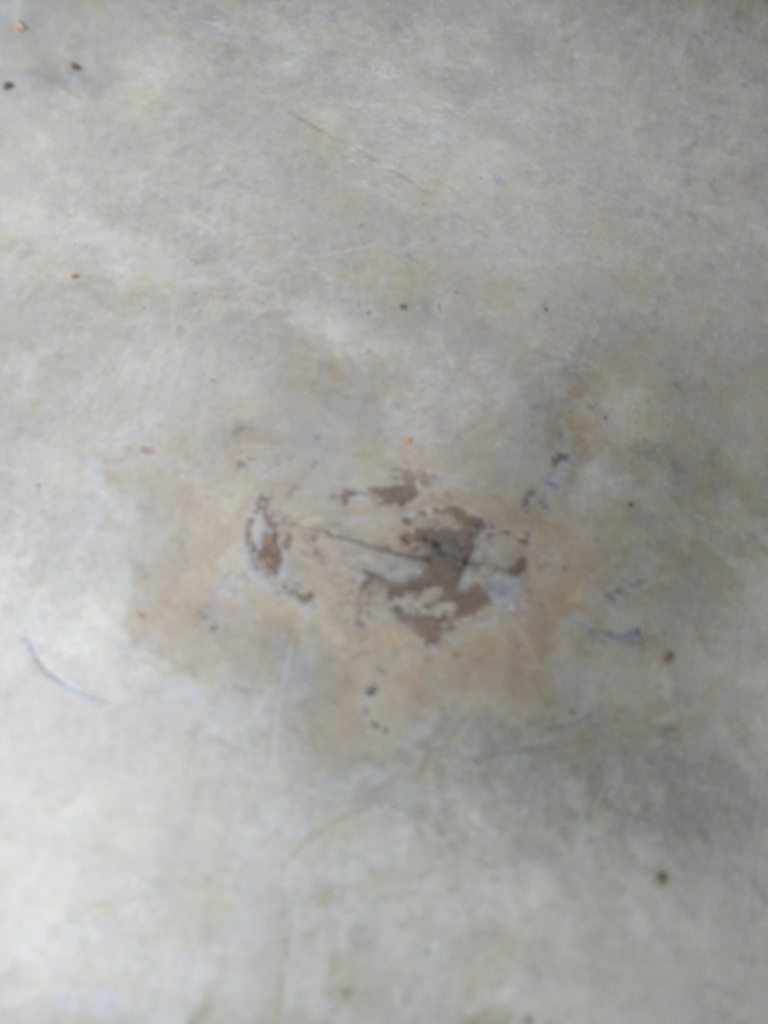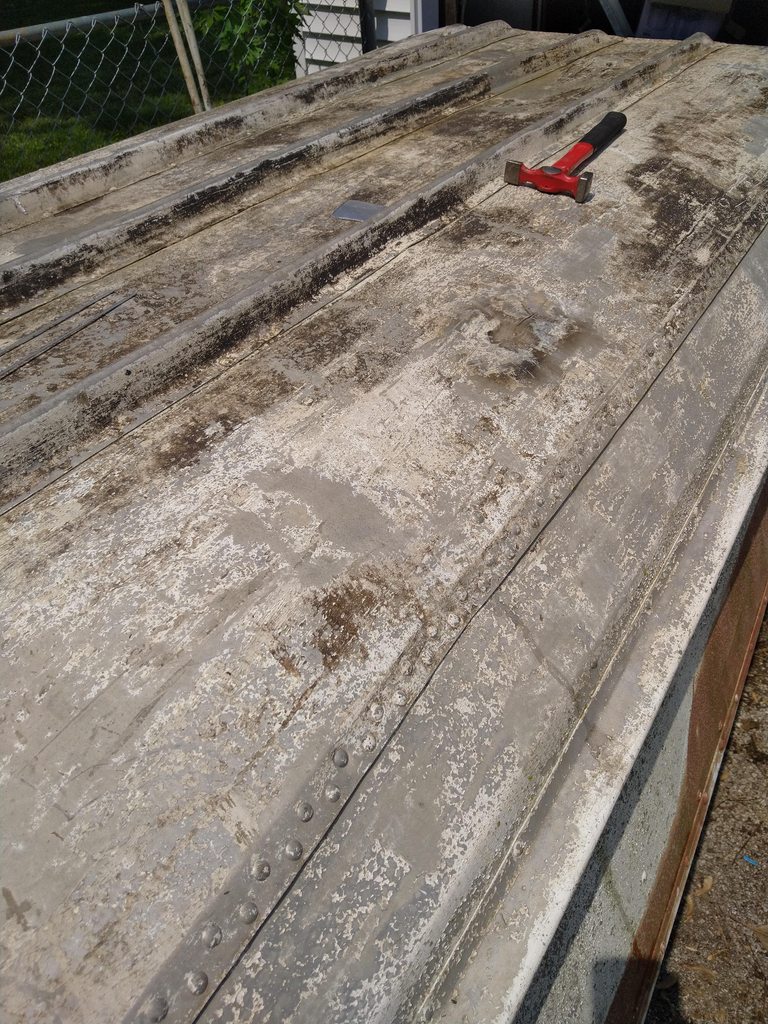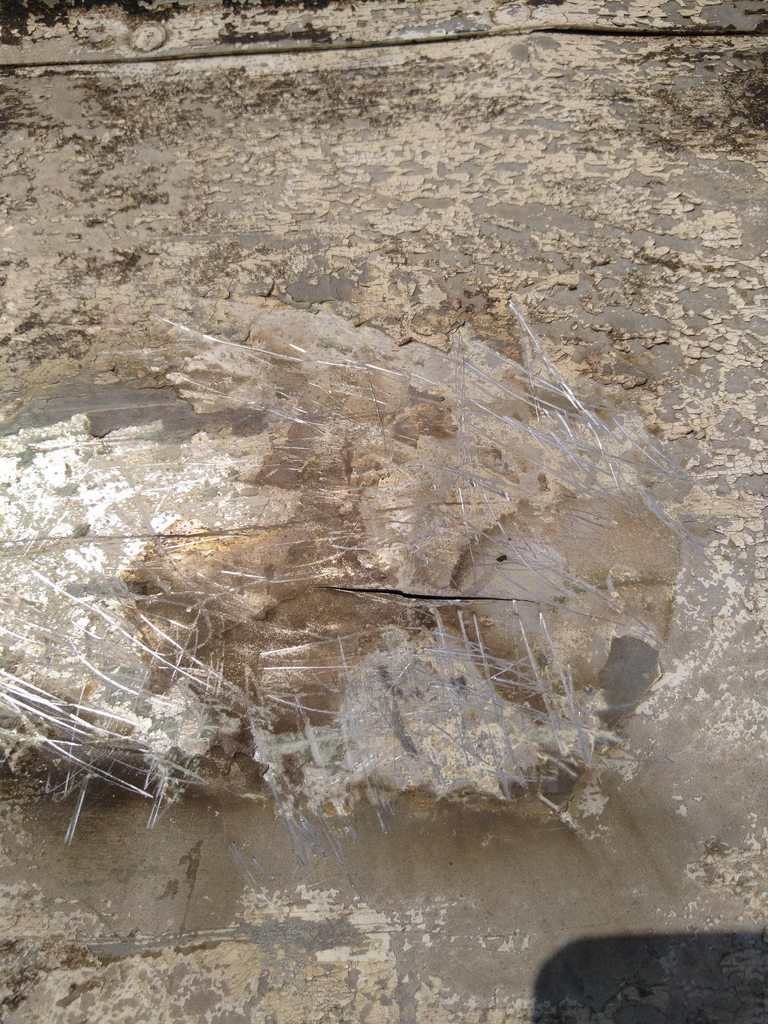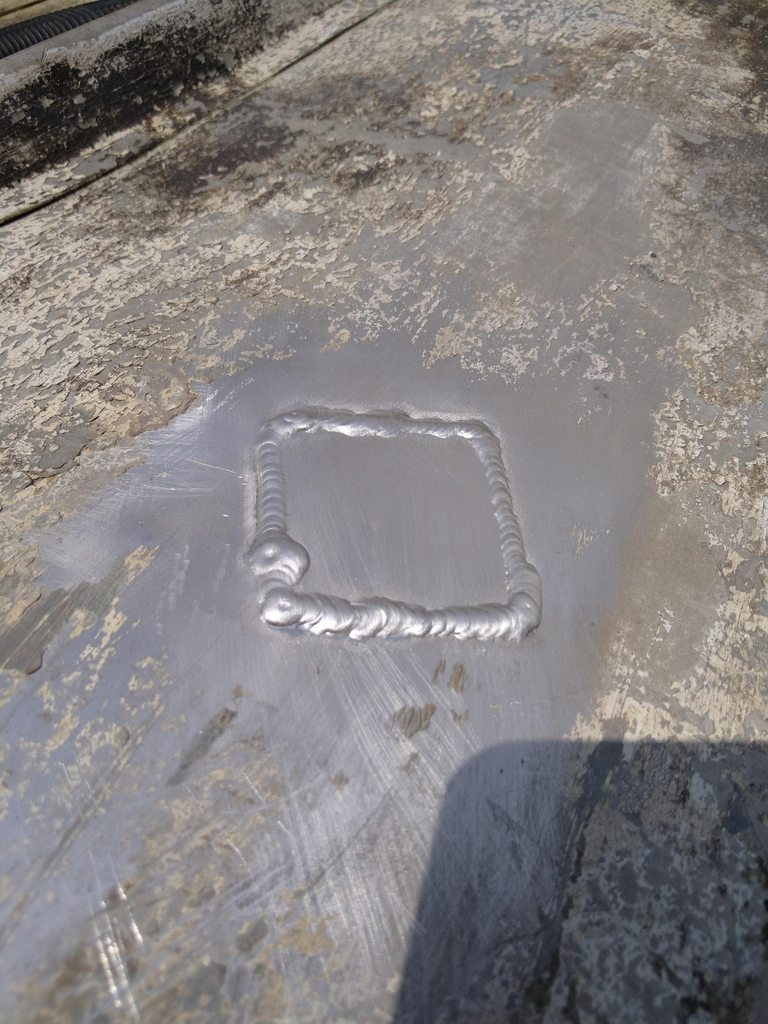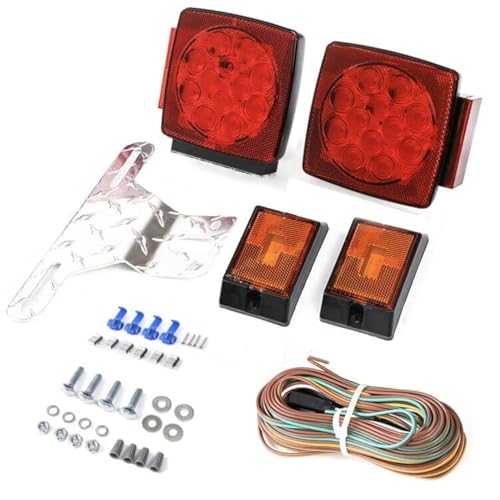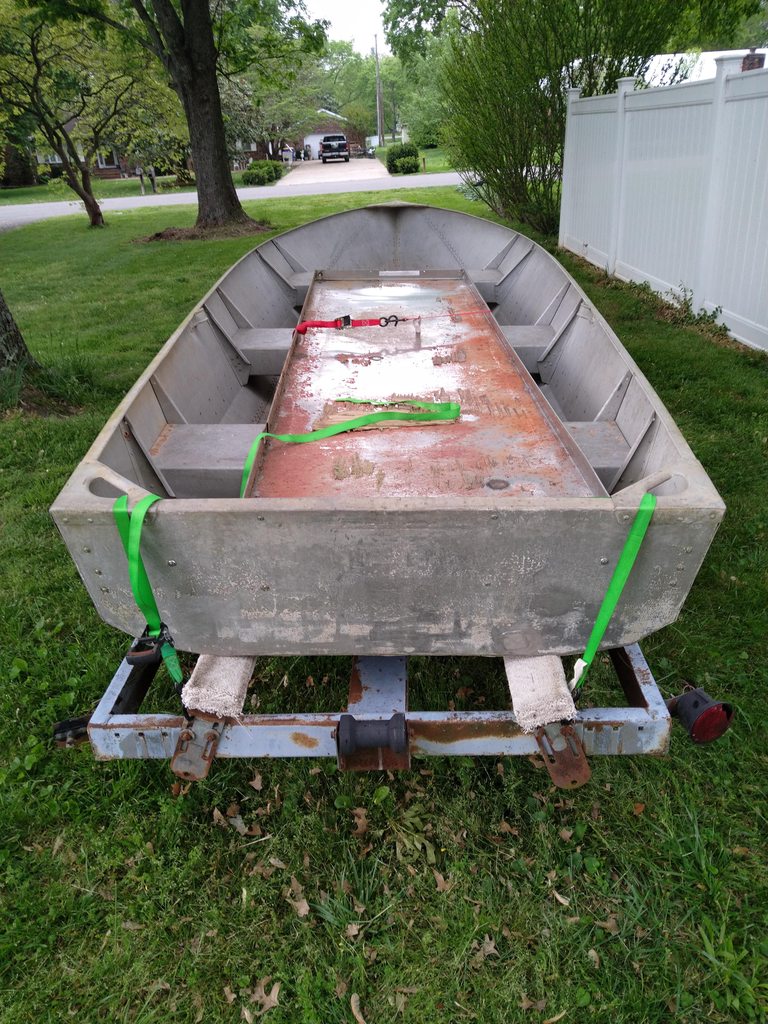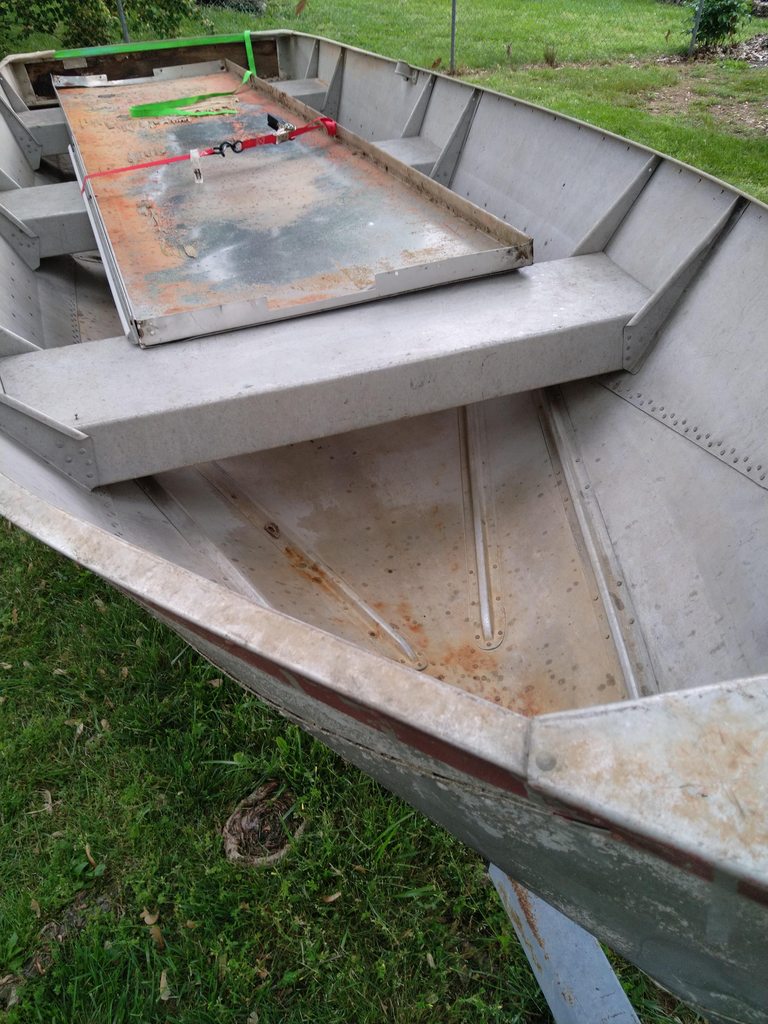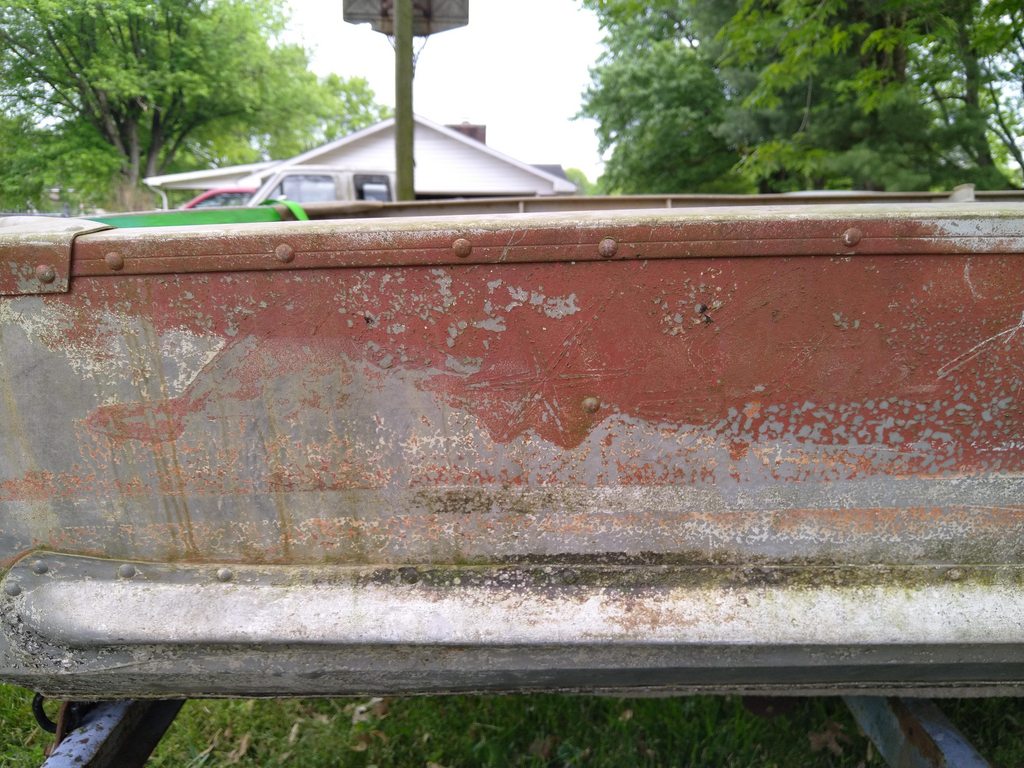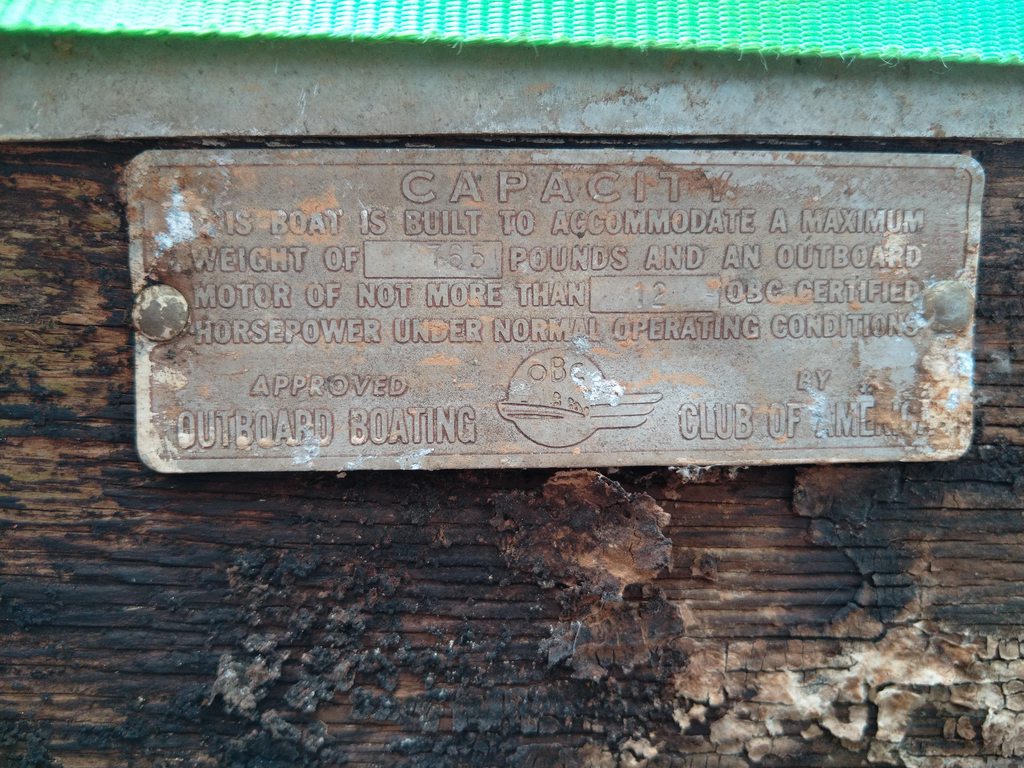Took some photos this morning.
We got the boat on the trailer, but haven't adjusted anything on the trailer yet.
I got a big sheet of stainless steel recovered from a countertop at the same time, so I gotta get that cut down and deliver it to my workshop today. That's what's laying in the boat here.
All the details seem to point to it being the "Commander" model but little details are different.
It definitely is a Lone Star boat, though, you can barely see it in this photo if you know what the logo looks like. it took a lot of sitting and staring at it to finally make out what it says.
Once the title is transferred, I need to fix this crack in the bottom. It's got two other welded patches already so I know that the welding won't be an issue, but there is one big dent right on a rivited seam that has me worried.
The crack above is where something got dropped inside the boat, but it's been patched in the past with some tarry black stuff. I will have to get it all cleaned up, run the saw through the crack to clean the edges, and then weld it back up...not opening the crack up will mean I'll never get the dent smoothed back. The dent is about the side of a baseball, the crack is about two inches long or so.
Oh, and the transom is rotten, I'll have to change that board out.



